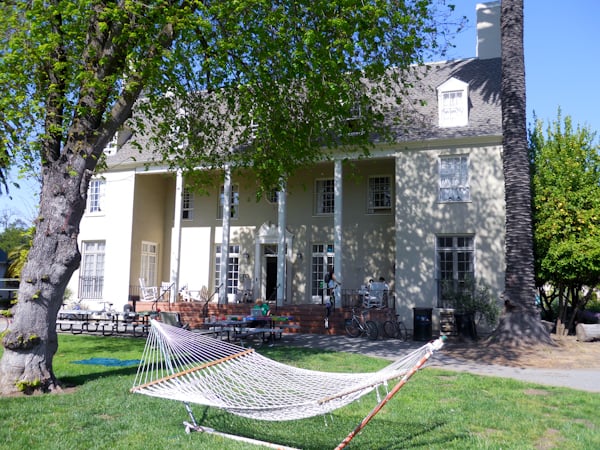After facing criticism from the Stanford community, University administrators apologized Tuesday evening for their “untimely and insufficient” response to a noose reported on campus earlier this month.
Stanford failed to respond quickly enough or to acknowledge the historical significance of the noose in its initial statement, administrators wrote in an email to the campus community.
In their first blog post on the incident, published five days after the noose was found, University President Marc Tessier-Lavigne and Vice Provost for Student Affairs Susie Brubaker-Cole wrote the noose was “recognized today as a symbol of violence and racism directed against African American people.”
They amended that description in Tuesday’s email to call the noose “a threat of violence and a powerful weapon of deadly force used during the history of lynchings in the U.S.”
The email also situated the July 12 incident in a national context of rising hate crimes, although the University has not yet labeled it as such, according to University spokesperson Pat Harris.
Closer to home, administrators wrote, Stanford police are investigating “an anonymous, racially charged note” left last Sunday in a comment box at a residence for high school students.
The noose, discovered by a summer camp advisor, was found hanging from a bush at a different residence also housing high school students. Stanford Department of Public Safety (SUDPS) spokesperson Bill Larson identified the residence as Columbae, a Row house that serves as a co-op during the academic year.
SUDPS has come under fire for its delay in responding to the noose’s discovery. The 9-1-1 dispatch center, operated by the Palo Alto Police Department, was notified of the noose at 11:21 p.m. on July 12, at which time Stanford police were investigating a residence burglar alarm.
After learning of the noose at 11:37 p.m., SUDPS first responded to a call in which several people were attempting to break into a locked building. Approximately 30 minutes after midnight, they arrived at Columbae, where they seized the noose — a 3-foot white rope with a loop on one end — as evidence, spoke to residents of the program and met with the advisor who first spotted the noose.
Cheron Perkins, a summer program advisor who took a video of the noose, told NBC News that she was angered by the department’s response.
“It just didn’t sit well with me,” Perkins said. “I felt very uncomfortable about the whole situation. And then once we talked to the police, and they just said, ‘Oh, well we took it down.’ No, there needs to be more done than just taking it down.”
Since finding the noose, Stanford’s Acts of Intolerance Office and Counseling and Psychological Services have both responded to provide support for affected students. Additionally, Stanford police met with FBI agents specializing in hate crime investigations.
However, on Wednesday, the Undergraduate Senate passed a unanimous resolution asking for increased community center funding, more transparency and faster action as the University responds to this and other racially-motivated acts on campus.
“When you are Black in a space that has favored white voices and perspectives, like our university, and you come across the hangman’s noose — or you discover that there was a noose on campus from a news report you do not feel safe,” wrote Munira Alimire ’22, Micheal Brown ’22 and Kobe Hopkins ’22, the three black senators, in a statement released alongside the resolution.
“When there are individuals or groups on campus who, sometimes anonymously and oftentimes openly, perpetrate hateful actions and use hateful speech, we believe that it is because the Stanford administration has failed to hold these groups responsible,” Hopkins added.
In Tuesday’s apology, administrators wrote that they must do more “to address and confront racism and to empathize more effectively with the experiences of all members of our community.” They plan to meet with students who have expressed “frustration, anger, and fear” over the noose, and work with them to improve the University’s response in the future.
“We in the leadership also need to deepen our understanding about our biases, and have a broader diversity of voices contribute to planning and decisions,” wrote Tessier-Lavigne, Provost Persis Drell, Brubaker-Cole and Department of Public Safety Chief Laura Wilson. “We recognize that we have much to learn.”
This article has been updated to include reference to the Undergraduate Senate’s resolution.
Contact Erin Woo at erinkwoo ‘at’ stanford.edu.
